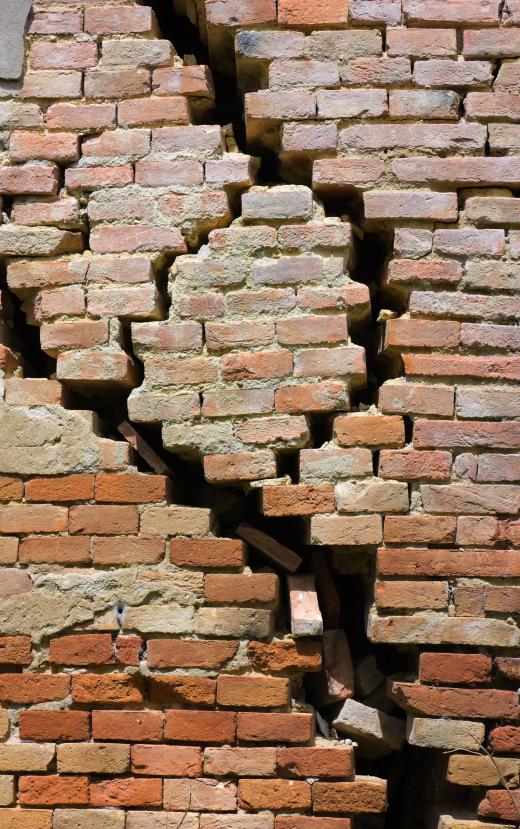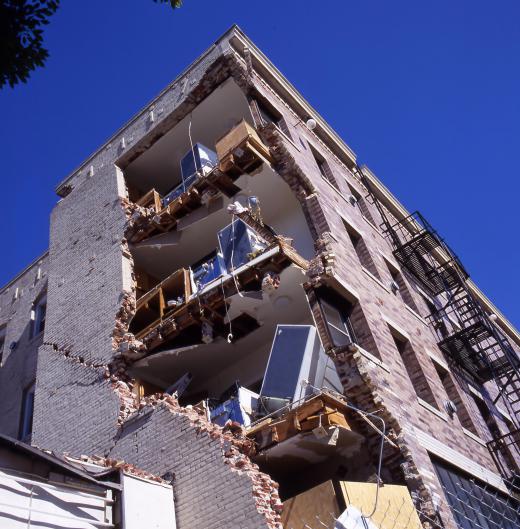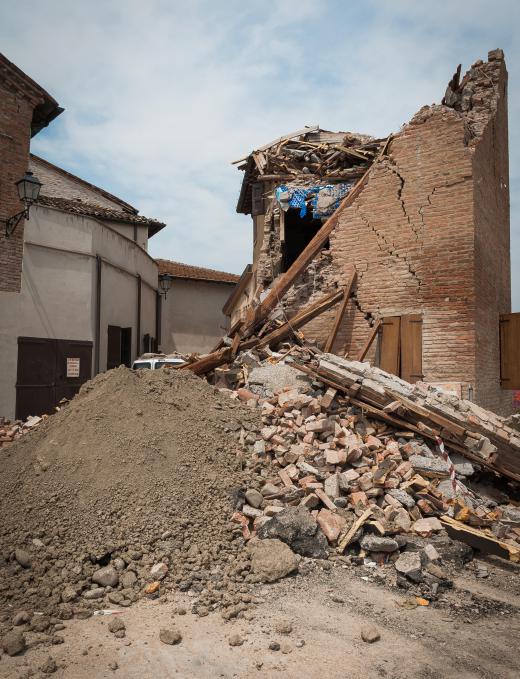What is Involved in Seismic Retrofitting?
 Mary McMahon
Mary McMahon
Seismic retrofitting is a school of construction engineering which focuses on modifying existing structures to make them more earthquake resistant. While there is no such thing as an earthquake-proof structure, especially in a high intensity earthquake, changes can be made to a structure to make it more safe. In earthquake-prone areas, seismic retrofitting is required on many structures, especially bridges, tunnels, freeway overpasses, and public buildings. In addition, new structures must conform with an established seismic standard.
There are four basic types of seismic retrofitting. The most basic is known as “public safety retrofitting.” In this type of seismic retrofitting, a structure is reinforced so that people should not be killed in an earthquake, although they may be injured. In a large earthquake, the structure itself may become unsafe and need to be destroyed and rebuilt. For structures which are not very valuable, this type of seismic retrofitting is a reasonable option, if the company does not want to rebuild the structure altogether.

The next level of seismic retrofitting is “structure survivability,” designed to ensure that the structure will endure the earthquake, although it may need significant repairs. Next comes “primary structure undamaged,” a type of seismic retrofitting in which the majority of the damage to a structure as a result of an earthquake should be cosmetic. Finally, “structure unaffected” is the highest level of seismic retrofitting, chosen for buildings of high economic, social, or cultural value. Some of these terms are a bit misleading, as no structure can be made entirely safe.

A major concern for companies that handle seismic retrofitting is historic buildings. It is important to preserve historic buildings with seismic retrofitting, but it is also important to ensure that the integrity of the building is not compromised. This take extensive work and cooperation with companies which specialize in restoration of historic buildings.

Private homes can also undergo seismic retrofitting, and the choice of even moderate retrofitting will reduce insurance costs. Primarily, however, seismic retrofitting is used for buildings over 10 stories tall, which can reach a dangerous vibrational frequency in an earthquake, along with roadways, which must be maintained so that emergency services can act quickly in an earthquake.
A number of measures, both internal and external, are undertaken as part of seismic retrofitting. The addition of sturdy trusses and girders to reinforce a building is common, as is “isolation,” a technique which turns a building into a sort of island so that it will not be as profoundly impacted by a major earthquake. Shock absorbers, baffles, and other building techniques are also used to make structures safer in an earthquake. People who live in earthquake prone regions should not rely on seismic retrofitting for safety, however; they should regularly review earthquake safety materials, and make sure that they have an evacuation plan in place.
AS FEATURED ON:
AS FEATURED ON:













Discuss this Article
Post your comments